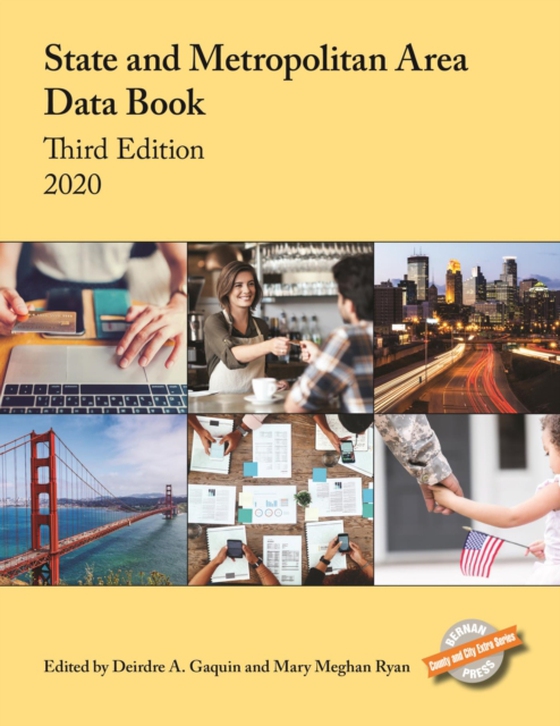
State and Metropolitan Area Data Book 2020 e-bog
1021,49 DKK
(inkl. moms 1276,86 DKK)
The State and Metropolitan Area Data Book is the continuation of the U.S. Census Bureau's discontinued publication. It is a convenient summary of statistics on the social and economic structure of the states, metropolitan areas, and micropolitan areas in the United States. It is designed to serve as a statistical reference and guide to other data publications and sources. This new edition featu...
E-bog
1021,49 DKK
Forlag
Bernan Press
Udgivet
6 oktober 2020
Længde
448 sider
Genrer
Reference works
Sprog
English
Format
pdf
Beskyttelse
LCP
ISBN
9781641434201
The State and Metropolitan Area Data Book is the continuation of the U.S. Census Bureau's discontinued publication. It is a convenient summary of statistics on the social and economic structure of the states, metropolitan areas, and micropolitan areas in the United States. It is designed to serve as a statistical reference and guide to other data publications and sources. This new edition features more than 1,500 data items from a variety of sources. It covers many key topical areas including population, birth and death rates, health coverage, school enrollment, crime rates, income and housing, employment, transportation, and government.The metropolitan area information is based on the latest set of definitions of metropolitan and micropolitan areas including:a complete listing and data for all states, metropolitan areas, including micropolitan areas, and their component counties2010 census counts and more recent population estimates for all areasresults of the 2016 national and state electionsexpanded vital statistics, communication, and criminal justice datadata on migration and commuting habitsAmerican Community Survey 1- and 3-year estimatesdata on health insurance and housing and finance mattersaccurate and helpful citations to allow the user to directly consult the sourcesource notes and explanationsA guide to state statistical abstracts and state informationEconomic development officials, regional planners, urban researchers, college students, and data users can easily see the trends and changes affecting the nation today.
 Dansk
Dansk

